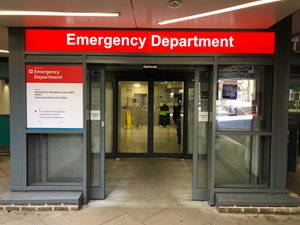Harnessing telehealth for rural critical access hospitals
Seasonal rush and the role of the infectious disease doctor
The interplay of patient comorbidities, severity of illness, and seasonality emerges as a pivotal triad shaping strategies for resource allocation. Autumn and winter correlate with increased respiratory illnesses, including influenza, RSV, and COVID. These viruses are associated with high morbidity and mortality in individuals of extreme age or with chronic respiratory illnesses as well as other immunocompromised states. Overcrowded emergency departments lead to higher mortality, increased length of hospital stay, and rising costs.
Tele-infectious disease physicians provide real-time guidance, fostering meaningful clinical discussions and collaborative co-management. Infectious disease physicians can be leveraged to assist in the coordinated response needed to address seasonal surges in resource allocation. Their knowledge of epidemiologic trends and targeted therapeutic interventions can also be utilized consistently year-round by hospital administrators to prevent patient leakage, manage bed capacity, and optimize provider access.
 |
How can a telehealth-enabled resource support seasonal specialist coverage?
1. Load balancing hospitals and preventing patient leakage
Rural hospitals face patient leakage challenges, prompting migration to urban centers for specialized care. These transfers are often unnecessary and costly and create congestion at the urban facility. Telehealth addresses this by facilitating remote collaboration with infectious disease providers. Patients receive personalized care locally, retaining revenue and strengthening community ties.
2. Optimizing physician access
Rural health care grapples with specialized physician shortages. Telehealth broadens access to health care professionals, enabling virtual consultations, remote assessments, and targeted treatment plan prescriptions. This enhances care quality, relieving strain on on-site medical personnel who may feel insular in their practice. In an era of difficult-to-treat bacterial infections and increasing antibiotic resistance, hospital administrators and patients benefit from an infectious disease provider leading the antibiotic stewardship campaign – regardless of hospital size or geography. This happens through daily practice as well as taking leadership in monitored virtual programs. Hospital administrators can call on infectious disease providers to navigate infection control strategies that directly influence isolation-room bed logistics, as determining the appropriate time to safely discontinue isolation can facilitate movement.
What does it take to bring telehealth to support rural seasonal care needs?
Implementing telehealth in rural CAHs requires strategic planning and collaboration. Here are early steps for administrators to consider:
Infrastructure investment: Develop the necessary technological infrastructure to support telehealth services, providing a seamless and secure platform for virtual consultations.
Training and education: Train local health care professionals on clinical workflows and expectations. Create targeted protocols for collaborative management of common infectious illnesses that require time-sensitive interventions. Leverage technology to meet mutually defined goals.
Community outreach: Spread awareness to the community via campaigns about the availability of new services provided by your institution. Emphasize the convenience and accessibility while dispelling any misconceptions.
Collaboration with infectious disease specialists: Forge partnerships with infectious disease physicians who have experience in rural health and can navigate the local landscape.
Telehealth and tele-infectious disease consultation as an everyday solution
Rural CAHs, standing at the crossroads of innovation and necessity, can thrive both clinically and financially by embracing telehealth. It offers a lifeline to administrators aiming to achieve optimal care, prevent patient leakage, optimize physician access, and become local care providers. Embracing telehealth is not just a solution during seasonal surges but a powerful commitment to the well-being and sustainability of rural health care.
NRHA adapted the above piece from Equum Medical, a trusted NRHA partner, for publication within the Association’s Rural Health Voices blog.
